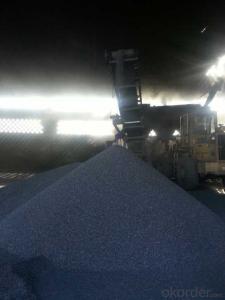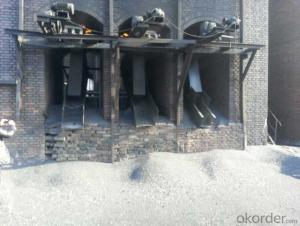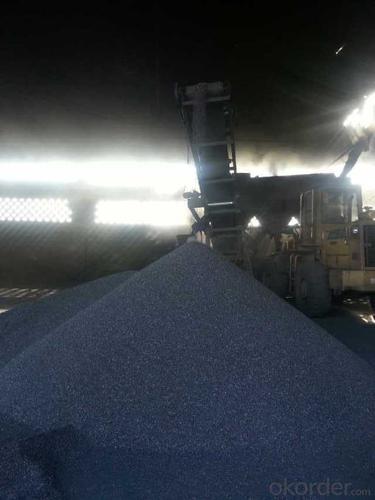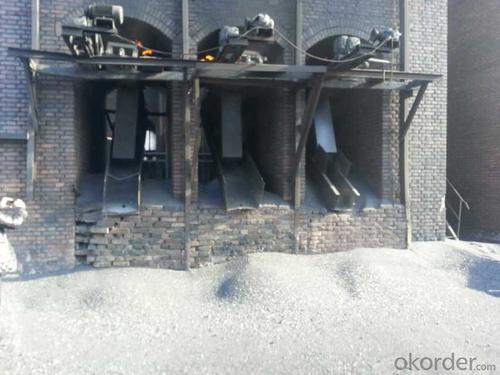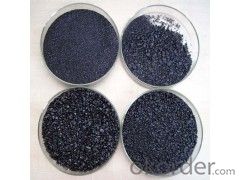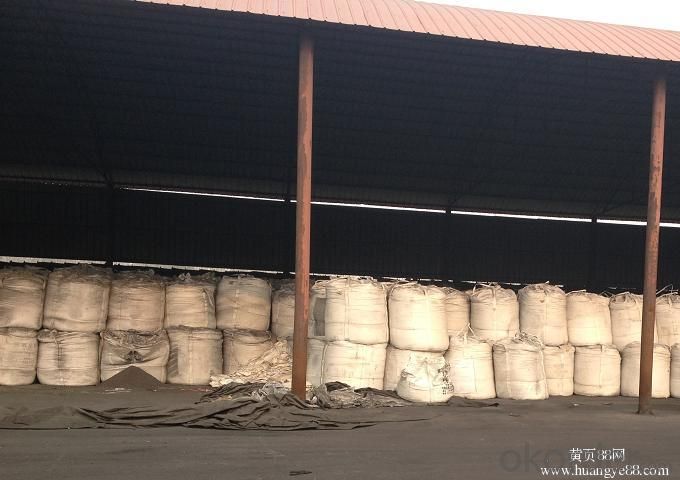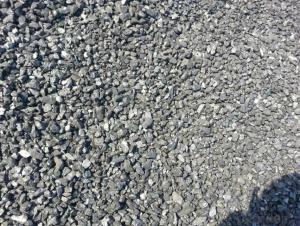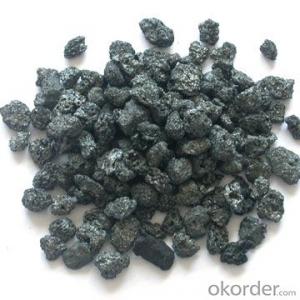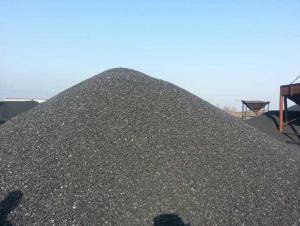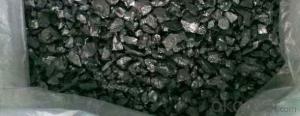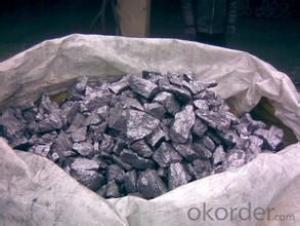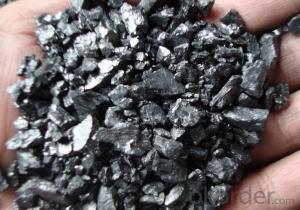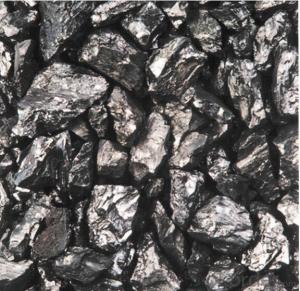FC 82% Calcined Anthracite Coal Used as Injection Carbon
- Loading Port:
- Tianjin
- Payment Terms:
- TT OR LC
- Min Order Qty:
- 20 m.t.
- Supply Capability:
- 5000 m.t./month
OKorder Service Pledge
OKorder Financial Service
You Might Also Like
Packaging & Delivery
FC 82% Calcined Anthracite Coal Used as Injection Carbon
25kgs/50kgs/1ton per bag or as buyer's request
Specifications
FC 82% Calcined Anthracite Coal Used as Injection Carbon
Calcined Anthracite
Fixed carbon: 90%-95%
S: 0.5% max
Size: 0-3. 3-5.3-15 or as request
FC 82% Calcined Anthracite Coal Used as Injection Carbon
It used the high quality anthracite as raw materials through high temperature calcined at over 2000 by the DC electric calciner with results in eliminating the moisture and volatile matter from anthracite efficiently, improving the density and the electric conductivity and strengthening the mechanical strength and anti-oxidation. It has good characteristics with low ash, low resistvity, low sulphur, high carbon and high density. It is the best material for high quality carbon products.
Advantage and competitive of caclined anthracite:
FC 82% Calcined Anthracite Coal Used as Injection Carbon
1. strong supply capability
2. fast transportation
3. lower and reasonable price for your reference
4.low sulphur, low ash
5.fixed carbon:95% -90%
6..sulphur:lower than 0.3%
General Specification of Calcined Anthracite:
FC 82% Calcined Anthracite Coal Used as Injection Carbon
| FC | 90 | 88 | 85 | 83 | 82 |
| ASH | 8.5 | 10 | 12 | 14 | 15 |
| V.M. | 1.5 | 2 | 3 | 3 | 3 |
| S | 0.35 | 0.5 | 0.5 | 0.5 | 0.5 |
| MOISTURE | 0.5 | 1 | 1 | 1 | 1 |
Pictures
FC 82% Calcined Anthracite Coal Used as Injection Carbon
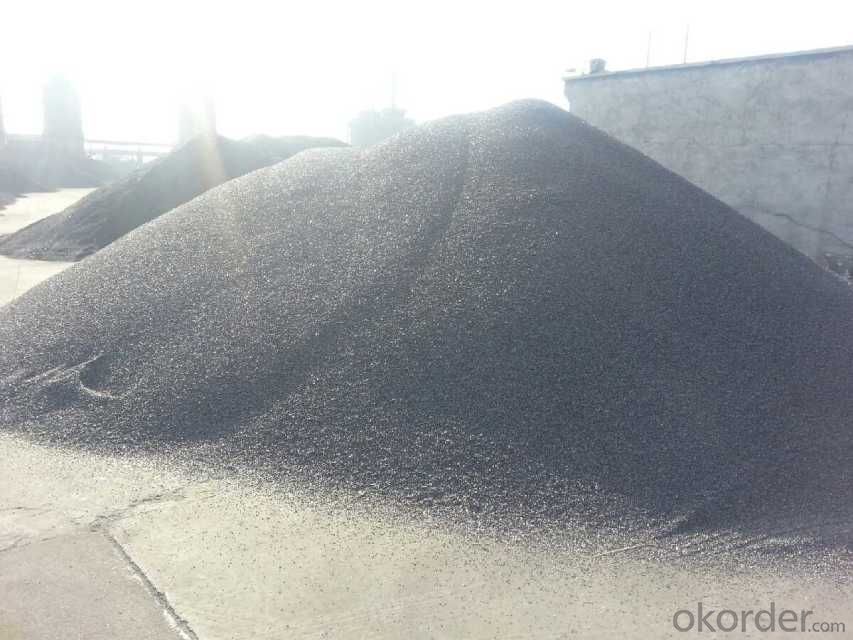
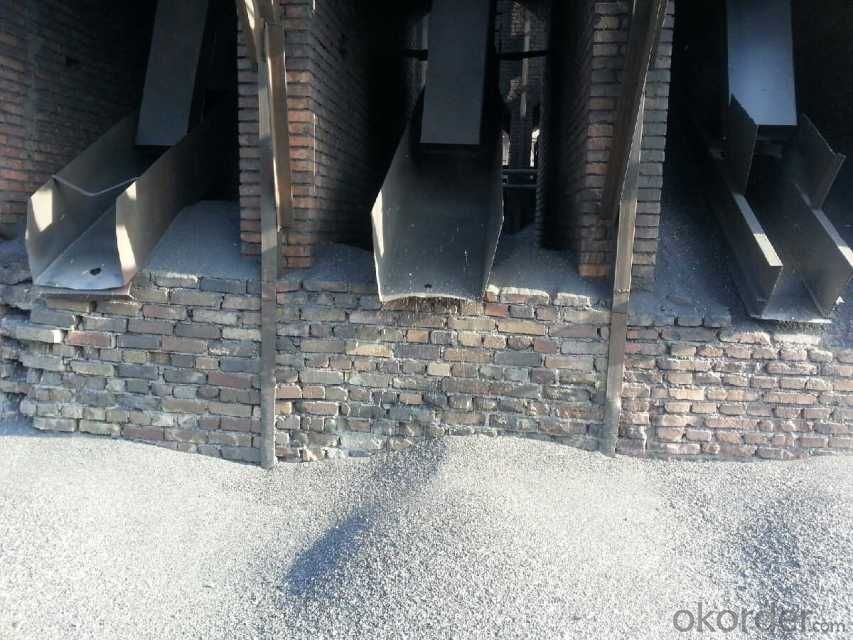
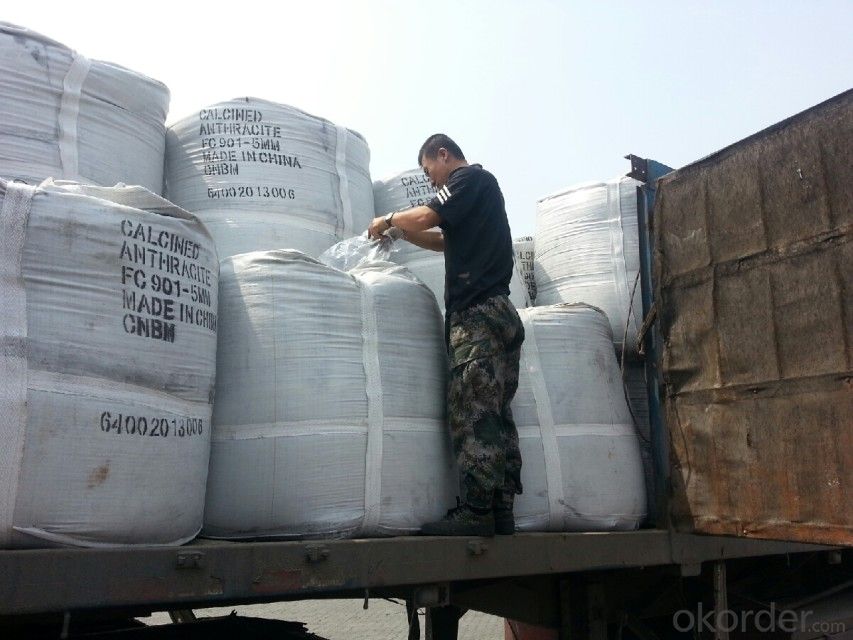
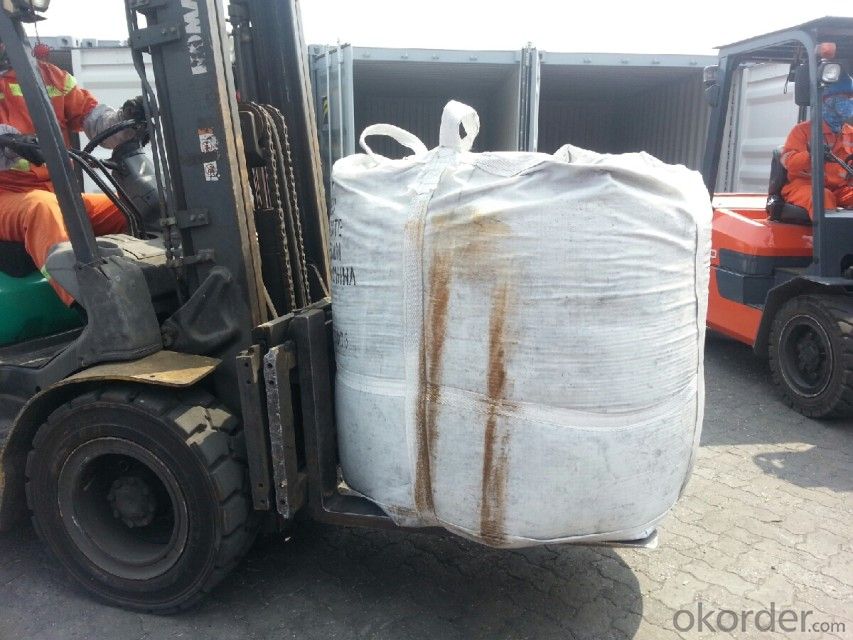
FC 82% Calcined Anthracite Coal Used as Injection Carbon
1.High quality and competitive price.
2.Timely delivery.
3.If any item you like. Please contact us.
Your sincere inquiries are typically answered within 24 hours.
2.Timely delivery.
3.If any item you like. Please contact us.
Your sincere inquiries are typically answered within 24 hours.
- Q: What are the impacts of carbon emissions on the stability of savannas?
- The stability of savannas, which are delicate and diverse ecosystems, is significantly affected by carbon emissions. One of the main outcomes of carbon emissions is the increase in greenhouse gases, including carbon dioxide, in the atmosphere. This results in global warming, which directly and indirectly impacts savannas in various ways. To begin with, global warming caused by higher temperatures can disrupt the natural fire regimes in savannas. These ecosystems have adapted to periodic fires, which are essential for maintaining their structure and biodiversity. However, increased temperatures can intensify and prolong fire seasons, leading to more frequent and intense wildfires. As a result, the natural balance is disturbed, resulting in the loss of vegetation, changes in species composition, and reduced overall stability of the savanna ecosystem. Additionally, elevated levels of carbon dioxide can affect the physiology and growth of plants. While some studies suggest that increased carbon dioxide concentrations may enhance plant productivity in savannas, it is important to consider other factors such as nutrient and water availability. If these factors do not keep up with the increased carbon dioxide levels, the positive effects on plant growth may be limited, resulting in imbalances within the ecosystem. Moreover, carbon emissions contribute to climate change, which alters rainfall patterns and distribution. Savannas rely on a delicate balance between wet and dry seasons, and changes in precipitation patterns can disrupt this balance. This affects the availability of water for plants and animals, leading to shifts in species distribution, reduced habitat suitability, and increased competition for limited resources. All these factors further destabilize the savanna ecosystem. Lastly, carbon emissions also contribute to ocean acidification, which affects marine ecosystems. Coral reefs, which are connected to savannas through coastal regions, provide crucial habitat and protection for many marine species. Acidic waters can harm coral reefs, leading to their decline and subsequent loss of biodiversity in savanna ecosystems. In conclusion, the stability of savannas is significantly impacted by carbon emissions. Global warming, changes in fire regimes, altered precipitation patterns, and ocean acidification all affect the delicate balance and biodiversity of these ecosystems. Addressing carbon emissions and mitigating their effects is crucial for ensuring the long-term stability and conservation of savannas and the services they provide.
- Q: How is carbon used in the production of ink?
- Various forms of carbon, such as carbon black or activated carbon, are employed in the production of ink. Carbon black, a fine black powder derived from incomplete petroleum combustion, is commonly used as a pigment to achieve deep black color in inks. Its small size and high surface area enable even dispersion in the ink, ensuring consistent color. On the other hand, activated carbon is a porous carbon form produced by heating materials like wood or coconut shells at high temperatures. In ink production, it functions as a filter or purification agent. With its extensive surface area and microscopic pores, activated carbon effectively adsorbs contaminants and impurities from the ink, enhancing its quality and stability for a smooth flow. In addition to its purification role, carbon also serves as a conductive material in ink production. Carbon-based inks, widely utilized in applications requiring electrical conductivity such as printed circuit boards, sensors, or electronic devices, consist of dispersed carbon particles in a liquid medium. This allows them to be printed or deposited onto a substrate, creating conductive pathways. Overall, carbon's vital role in ink production encompasses providing color, acting as a purification agent, and enabling electrical conductivity. Its adaptable properties and vast range of applications establish it as an indispensable component in the ink manufacturing process.
- Q: What's the difference between blue and red Panasonic batteries (carbon)?
- Blue is leak, proof, general, Purpose, general use battery (leak proof)Red is the long life long life battery (suitable for watches and clocks and other small power appliances)And heavy duty green seems to be good for high power appliances, such as toy cars
- Q: What are the impacts of carbon emissions on indigenous communities?
- The impacts of carbon emissions on indigenous communities are significant and multifaceted. These communities, who often depend on their surrounding environment for sustenance and cultural practices, are particularly vulnerable to the consequences of climate change. Increased carbon emissions contribute to rising global temperatures, leading to more frequent and intense extreme weather events such as droughts, floods, and storms. This directly affects indigenous communities' access to clean water, food security, and the ability to maintain traditional practices like agriculture, hunting, and fishing. Moreover, carbon emissions contribute to the melting of polar ice caps and glaciers, leading to rising sea levels and coastal erosion. This poses a serious threat to indigenous communities living in low-lying coastal areas, displacing them from their ancestral lands and disrupting their cultural heritage. Indigenous communities also face health issues as a result of carbon emissions. The burning of fossil fuels releases harmful pollutants that degrade air quality, leading to respiratory problems and an increased risk of diseases. Additionally, the extraction and processing of fossil fuels often occur on or near indigenous territories, leading to environmental degradation, water pollution, and the displacement of communities. Overall, the impacts of carbon emissions on indigenous communities are profound, undermining their cultural identity, livelihoods, and overall well-being. It is crucial to recognize and address these impacts through sustainable and inclusive climate action, ensuring the protection and empowerment of indigenous communities in the face of climate change.
- Q: Consult the carbon content of austenite
- Pure iron carbon alloys, austenitic (A) carbon content in different grades, different temperature and different, in more than 727 degrees (727 degrees when the carbon content is 0.77%), 1148 degrees, 2.11% carbon content with see iron carbon phase diagram
- Q: How does carbon contribute to the flavor of food?
- Carbon, in the form of charcoal or charred substances, can contribute to the flavor of food in several ways. Firstly, when food is grilled or roasted over charcoal, the carbon imparts a smoky flavor to the food, enhancing its taste and aroma. This smokiness is particularly desirable in foods like barbecued meats, vegetables, or even certain cheeses, as it adds a distinct and enjoyable element to the overall flavor profile. Furthermore, carbon can also act as a natural filter, absorbing and removing impurities from food and beverages. This filtration process can help eliminate unpleasant odors and flavors, resulting in a cleaner and more refined taste. For example, activated carbon is commonly used in the production of alcoholic beverages like whiskey or vodka to remove impurities and create a smoother, more flavorful drink. In addition, carbon can contribute to the development of desirable texture and color in certain foods. When sugar or other carbohydrates are heated, they undergo a process called caramelization, where the sugars react with heat to form a complex mixture of carbon compounds. This caramelization process creates rich, golden-brown hues and a unique depth of flavor, enhancing the overall taste experience. Lastly, carbon can also play a role in the fermentation process, which is essential in the production of various foods and beverages. During fermentation, microorganisms consume sugars and release carbon dioxide, which contributes to the texture, flavor, and carbonation of the final product. This is particularly evident in bread, beer, wine, and other fermented foods where the presence of carbon dioxide adds lightness, complexity, and effervescence to the flavor profile. In summary, carbon contributes to the flavor of food through its ability to impart smokiness, act as a natural filter, facilitate caramelization, and participate in fermentation processes. Its presence in various forms enhances the taste, texture, and overall enjoyment of a wide range of food and beverages.
- Q: What are the carbon monoxide collection methods?
- Drainage methodExhaust air cannot be used because CO is poisonous
- Q: What are some natural sources of atmospheric carbon emissions?
- Volcanic eruptions, forest fires, and the decomposition of organic matter are among the natural sources that contribute to atmospheric carbon emissions. When volcanoes erupt, they discharge significant quantities of carbon dioxide and other greenhouse gases into the air. In the case of forest fires, carbon dioxide is released when trees and vegetation burn. Moreover, the breakdown of organic matter, including deceased plants and animals in forests, wetlands, and oceans, produces carbon dioxide as a natural byproduct. These natural processes have been ongoing for millions of years and play a vital role in the carbon cycle, which plays a crucial role in Earth's climate regulation.
- Q: How does carbon impact the availability of clean drinking water?
- Carbon, primarily in the form of carbon dioxide (CO2), contributes to climate change and alters precipitation patterns. This can lead to increased frequency and intensity of droughts and floods, affecting the availability and quality of clean drinking water. Additionally, carbon-based pollutants from industries and transportation can contaminate water sources, making them unsafe for consumption.
- Q: There are several allotropes of carbon
- Allotrope of carbon: diamond, graphite, carbon 60 (fullerene), amorphous carbon (charcoal, coke, activated carbon, etc.)
Send your message to us
FC 82% Calcined Anthracite Coal Used as Injection Carbon
- Loading Port:
- Tianjin
- Payment Terms:
- TT OR LC
- Min Order Qty:
- 20 m.t.
- Supply Capability:
- 5000 m.t./month
OKorder Service Pledge
OKorder Financial Service
Similar products
Hot products
Hot Searches
